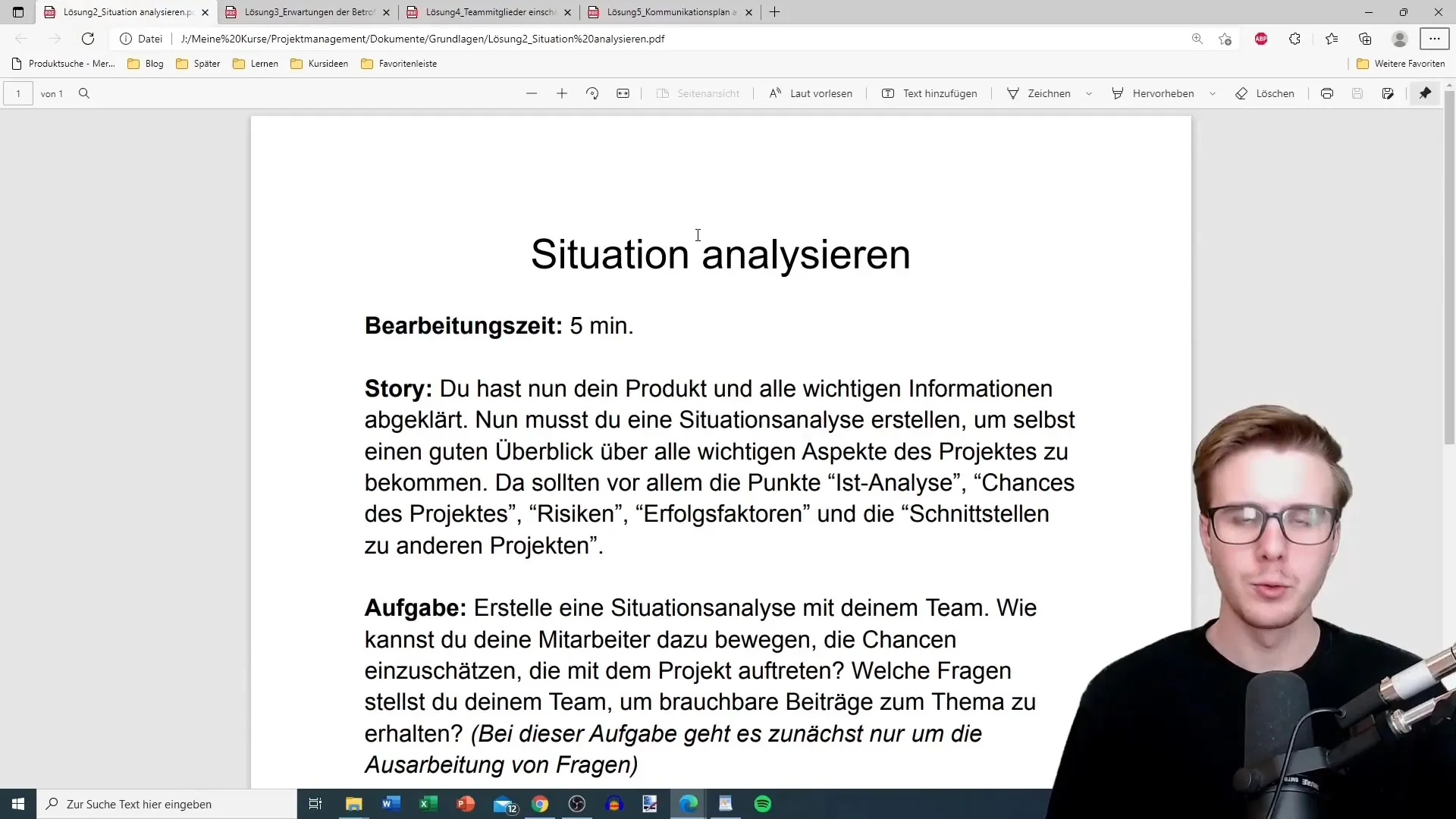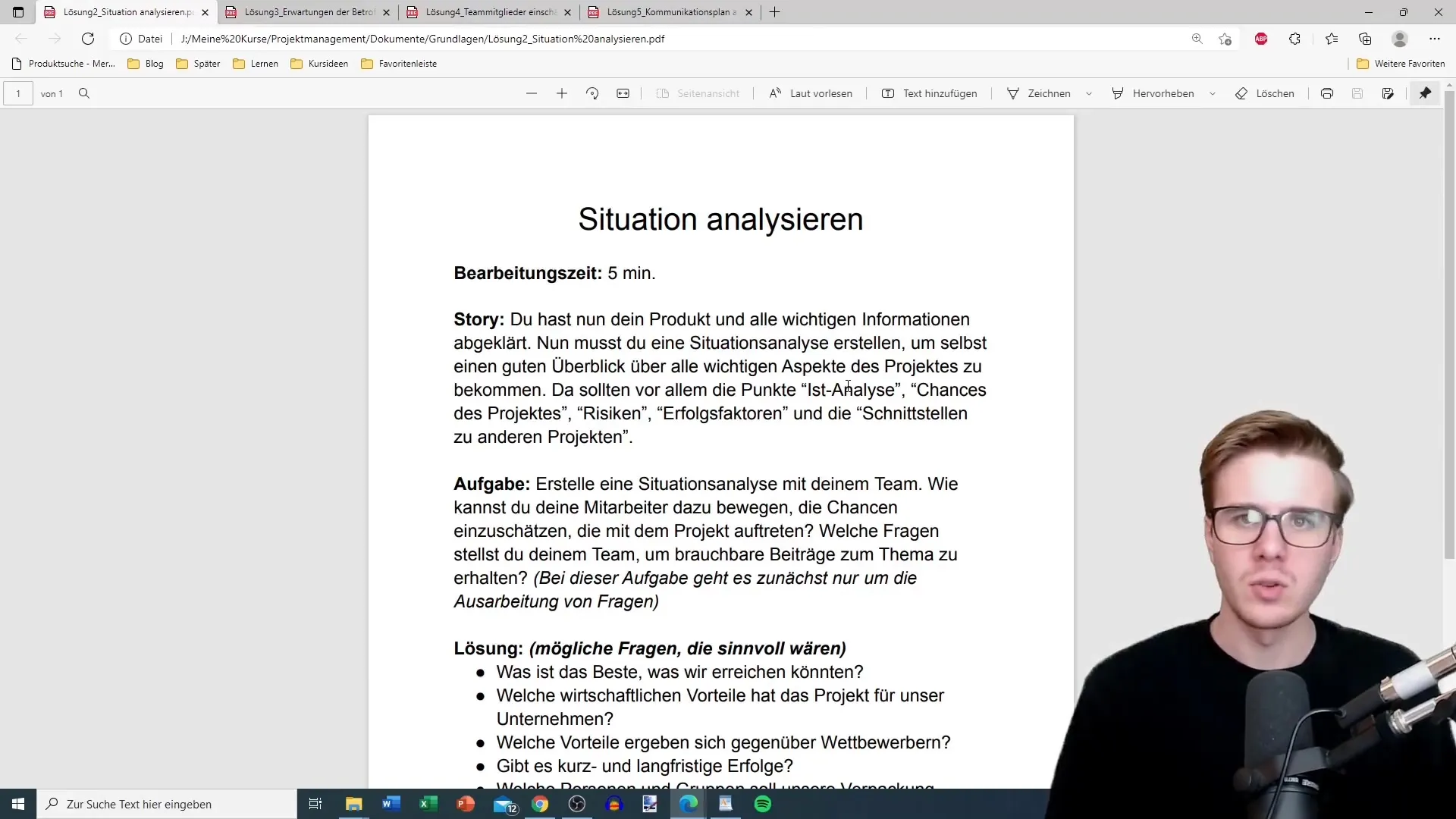A situational analysis is an essential method in project management that helps you assess the current state of a project and make important decisions. In this guide, you will learn how to effectively conduct such an analysis. The focus will be on important questions that help you identify trap questions and gain a clear overview of target and actual conditions.
Main insights
- A situational analysis helps you define clear goals and recognize potential risks or opportunities.
- Consider various perspectives from team members and stakeholders to obtain comprehensive answers.
- The connection between actual and target conditions is crucial for project success.
Step-by-Step Guide
Step 1: Formulate the right questions
Start by defining your questions. Consider what is the best you can achieve with your project. It is important to not only think about what is realistically possible but also to aim for the optimal outcome. Ask yourself: “What is the best we can achieve?” This consideration allows you to work out the strengths of the project.

Step 2: Analyze actual vs. target condition
Define the difference between the actual condition and the target condition. The actual condition describes the current situation, while the target condition expresses your desired outcome. Comparing these two states is crucial to understand what measures you need to take. Note what the achievable goals are and what the realistic expectations for the project are.

Step 3: Determine economic benefits
A thorough situational analysis also includes assessing the economic benefits of the project. Consider what significant advantage it has for the company if the project is successfully carried out. Ask yourself: What impact does the decision have on revenue and production costs? Is it possible to secure or improve the market position through your project?
Step 4: Identify opportunities and risks
When analyzing, it is also important to consider the opportunities and risks. Think about what opportunities the project might present. Identify also possible risks that could arise from unforeseen circumstances or poor decisions. Here, it is helpful to clearly define the success factors. What needs to be considered to take advantage of these opportunities?
Step 5: Set milestones and interim goals
To measure your progress, it is crucial to define concrete milestones and interim goals. Consider which sections are important for your project progress. If you have interim goals, you can better check whether you are on schedule and whether you are achieving your goals. This measurability increases the likelihood of your project's success.
Step 6: Identify target groups
Identify the target audience for your project. Who are the main contacts for your product? Are they B2B customers or end consumers? This clarity will help you better understand the needs and preferences of your customers and tailor your product accordingly.
Step 7: Evaluate external impact
The impact of your project on the outside world is a crucial point. Remember that the packaging or end product has a significant influence on the perception of your brand. Consider what could happen if your project does not achieve the desired success. Do not underestimate the importance of external impact – it can be decisive for the success or failure of your project.
Step 8: Analyze team dynamics
How does the project affect your team? Could it potentially lead to the dissolution of the team, or will it strengthen collaboration? Get informed about the mood and opinions of your team members, as their input is important to understand team dynamics and ensure long-term success.
Step 9: Uncover concerns and obstacles
An honest reflection on concerns and obstacles is important. What doubts exist within the team? Are there structural or resource-related bottlenecks that could hinder you? Identify these points to address them proactively before they become serious problems.
Step 10: Generate and review responses
Finally, it is important that you consolidate all the information gathered from the previous steps. Evaluate relevant responses to create a complete situational analysis. Here it is crucial that the responses are not only theoretical but also provide actual practical benefits for the project.

Summary – Situational Analysis in Project Management: Your Step-by-Step Guide
Conducting a situational analysis as part of a project is essential to gain clear objectives and identify potential opportunities as well as risks. You should take the time to ask informed questions and evaluate all aspects of the project. This promotes not only success but also a good team atmosphere and a targeted implementation of your ideas.
Frequently Asked Questions
How do I find the right questions for my situational analysis?This means defining relevant goals and questioning both the actual and target state.
What are the benefits of a situational analysis for my project?It helps identify opportunities and risks and assess the economic relevance of the project.
How do I deal with concerns and obstacles?Reflect openly on potential problems and actively address them with the team to find solutions.


